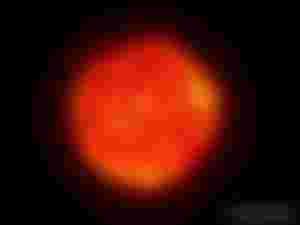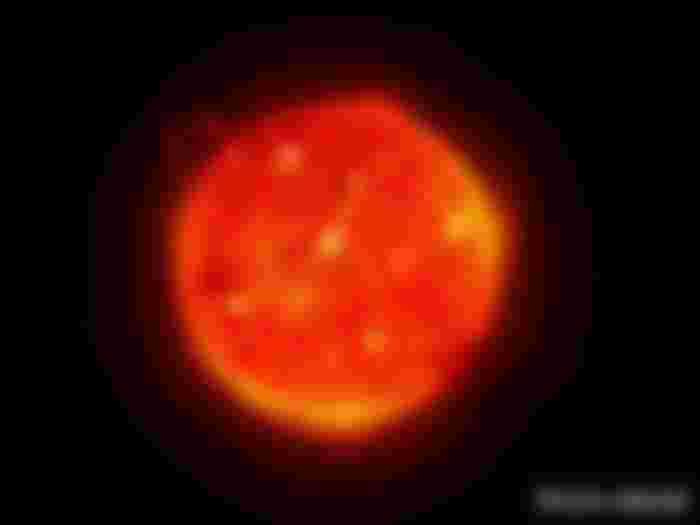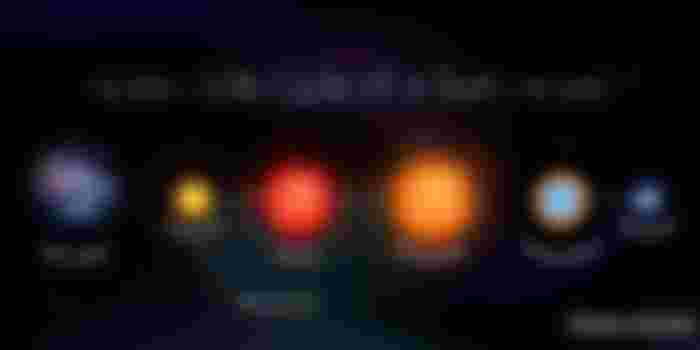
Speaking of the sun
-----------------
It's about the middle of the nineteenth century.
The scientist Lord Kelvin was then trying to determine the age of the sun.
At that time no one knew for sure what the source of sunlight radiation was.
Everyone thought that the source of the sun's energy was the gravitational force, which has been emanating from the sun in the form of light rays ever since a huge gaseous ball condensed in one place due to the force of gravity.
Kelvin took this to be true and determined the rate of radiation emitted from the sun and found out the age of the sun from there.
According to his calculations, the age of the Sun is much less than the age of the Earth as calculated by the geologists of the day, even less than the time required for Darwin's evolution.
Lord Kelvin was very pleased because he himself did not believe in evolution because of his personal religious beliefs.
But the problem was with Darwin's theory.
What is wrong with Darwin's evolution? If the age of the Sun is less than that of the Earth, then the time required for biological evolution to take place on Earth is longer than the age of the Sun. And since the existence of fauna is impossible without the sun, then the question of evolution does not arise.
Darwin fell into this trap, and so he omitted his own calculated time for evolution from the next edition of his book.
But science does not depend on anyone's personal beliefs.
The science of the past has come to its present state only through change and refinement.

There is no such thing as constant or unchanging in science, and since this branch of science is open to everyone in the world, if someone makes a mistake in this field, it is likely to be caught in the eyes of some of the thousands of other researchers scattered around the world. This is how science seeks the real truth through correction and refinement. So all the changes in science are phonetic, and always truth-seeking. And for all these reasons, science has universality.
However, in 1896, Becquerel discovered radioactivity.
Becquerel and Currie observed that radioactive substances, such as radium, also emit large amounts of heat during radiation. This radioactivity is a spontaneous event and during this time a heavier nucleus of the atom breaks down to form a relatively small nucleus.
In science, this process has been called 'nuclear fission' reaction.
This discovery led many to speculate that this "nuclear fission" reaction, not gravity, may be the only source of heat and light radiation from the sun, and that if we take this to be true, the age of the sun is much older than previously thought. Which is reasonable enough.
But the problem then was that it was fairly certain that there was no such thing as radioactive matter inside the sun, except for hydrogen.
So even this proposed new information did not get an established form.
The next incident was in 1920.
During this time, a researcher named Aston periodically measured the mass of atoms very precisely.
Another scientist, Eddington, looked closely at his measured mass and found that the total mass of the four hydrogen atoms was slightly greater than the mass of a helium-4 atom.
From this he suggested that the four most likely hydrogen atoms in the Sun combine to form a helium atom, and that the extra mass coming out of the Sun in the form of heat and light as this process unfolds.
But Eddington did not know how this was happening.
Eddington's ideas had to wait until 1932, the year scientist Chadwick discovered neutrons.
Eddington's proposed theory was later substantiated by various experiments. Einstein's E = mc ^ 2 formula also favors Eddington, because it tells us what a huge amount of energy we can get from converting a small amount of mass into energy. According to this formula, if we could completely convert one teaspoon of dust into energy, we would be able to supply electricity to the whole world for a few months with the energy we get.
And this is how the real secret of sunlight and heat radiation slowly comes out.
Will the sun live forever?
--------------------------------------------
Now the question is will our sun live forever?
Even if it is an unpleasant truth, the sun will not live forever.
Our favorite sun will also die one day.
There is nothing we can do to prevent some changes in nature, such as the sun's constant aging and rushing toward death. The favorite sun we see in the sky every day is just a burning gaseous mass.
About four and a half billion years ago, our sun was formed from dense gaseous clouds.
The mass of the sun is about three hundred and thirty-three thousand times the mass of the earth.
Hydrogen accounts for 63% of its total mass, helium for 25%, and the remaining 2% for relatively heavy elements, such as oxygen, carbon, neon, and iron.
It takes about 8 minutes and 19 seconds for light to come from the sun to the earth.
Since the speed of light is the highest velocity observed in nature as we know it (1 lakh 6 thousand miles per second, at this speed light can orbit the earth about seven times in one second), so you can understand how far the sun is from our earth.
If you drive 100 km per hour non-stop now. If you drive fast and leave your home for the purpose of traveling to the sun, then about 1600 years from today you will reach the sun.
Inside our sun, however, 600 million tons of hydrogen per second are fused together to form helium, and at the time of this fusion, energy equivalent to a mass of about 4 million tons per second is scattered around in the form of light and heat.
So we can see that the source of all the energy of the sun is hydrogen.
Hydrogen is therefore called 'solar fuel'.
As the amount of hydrogen in the Sun decreases over time (to be converted to helium), at some point all of the Sun's energy will be depleted. Then death will happen to our beloved sun.
This death will happen through a few steps.
The first stage of the Sun's death is: When the Sun's condition reaches such a point that its center of gravitational force and external radiation pressure will no longer be in equilibrium, the concentration of its center will increase greatly and the outer mantle will expand into a huge red object. Named "Red Giant". During this time, the outer part of the Sun will expand and surpass Mercury and Venus, meaning that it will be so large that it will swallow Mercury and Venus as well.
But we have no reason to worry about it right now, it will happen about 5 billion years from now.
Long before that, of course, the earth will become uninhabitable for us.
During this cycle of the Sun's death, the outer part will fall off and the rest will continue to cool and shrink as it radiates heat. When compressed, it will turn into a small white object called "white dwarf".
This is how our beloved Sun will die one day.
If we want to leave a trace of our existence in this universe, we will have to migrate to another solar system or galaxy long before the death of the sun, choosing a planet where our future generations will continue to live.
And that's why we have no choice but to explore space and travel.


Nice article by you my friend